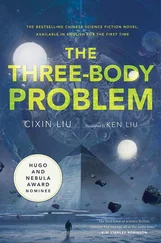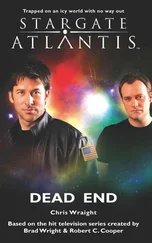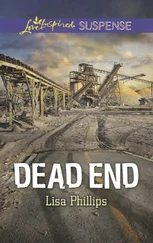That was where Europe VI first came into contact with two-dimensional space.
The light grew rapidly and turned into a glowing oval. The light it emitted was sliced into many shafts by the tall buildings all around, and illuminated the people-cloud on the city’s axis. The space city now resembled a giant ship whose bottom had been breached, sinking in a flat sea. The plane of the two-dimensional space rose like water, and everything that came into contact with the surface instantaneously turned into two dimensions. Clusters of buildings were cut, and their two-dimensional images spread out on the plane. Since the city’s cross section was but a small portion of the entire flattened city, most of the two-dimensionalized buildings had expanded beyond the oval marked by the city’s hull. On the rising, expanding plane, gorgeous colors and complicated structures flashed by and zoomed away in every direction, as though the plane was a lens through which one could see colorful beasts running. Because the city still possessed air, they could hear the sound of the three-dimensional world falling into two dimensions: a crisp, piercing series of crunches, as though the buildings and the city itself were made of exquisitely carved glass and a giant roller was crushing everything.
As the plane continued to rise, the people-cloud began to spread out in the opposite direction, like a curtain being lifted by an invisible hand. The scene reminded Cheng Xin of a massive flock of millions of birds that she had seen once. The flock had seemed like a unified organism changing shape in the dusk sky.
Soon, the plane had swallowed one-third of the city, and it continued to flicker frantically as it rose irresistibly toward the axis. Some people had begun to fall into the plane by now. They either fell behind due to malfunctions in their space suit thrusters or they had given up on running. Like drops of colorful ink, they spread open on the plane in an instant, and each appeared as a unique figure in two dimensions. On one of the zoomed-in images shown by the AI, they saw a pair of lovers leaping into the plane while in an embrace. Even after the two had been flattened, it was possible to see the figures in an embrace lying side by side—their postures appeared odd, as though drawn by a clumsy child who did not understand the principles of perspective. Nearby there was a mother who lifted her baby overhead as she fell into the plane, all so that the baby would survive for an extra tenth of a second. The mother and child were also vividly portrayed in this giant painting. As the plane kept on rising, the rain of people falling on it became denser. Two-dimensional human figures flooded forth on the plane, most moving outside the boundary of the space city.
By the time the two-dimensional space approached the axis, most of the surviving population had landed against the city’s far side. Half of the city was now gone, and as people looked “up” they could no longer see the familiar city on the other side, but only a chaotic, two-dimensional sky pressing down on the parts of Europe VI that remained in three dimensions. It was now no longer possible to escape from the main gateway at the north pole, so people congregated around the equator, where there were three emergency exits. The weightless crowd piled into mountains around the exits.
The two-dimensional space passed through the axis and swallowed up the three suns, but the light emitted by the two-dimensionalizing process made the world even brighter.
A low whistling sound began: The city was losing its air to space. The three emergency exits along the equator were wide open, each as large as a football field; outside them was the still-three-dimensional space.
The ship’s AI pushed another information window to the front. This was a feed from space looking down at Europe VI. The two-dimensionalized portion of the space city spread across the invisible plane, making the rapidly sinking, still-three-dimensional portion look minuscule by comparison, like the back of a whale peering out of the vast ocean. Three clumps of black smoke rose out of the city and dissipated in space; the “smoke” was formed from the people blown out by the fierce winds of the decompressing space city. The lonely, three-dimensional island continued to sink and melt into the two-dimensional sea. In less than ten minutes, all of Europe VI had turned into a painting.
The painting of Europe VI was so vast that it was hard to estimate its exact area. It was a dead city, but perhaps it was more accurate to call it a 1:1 drawing of the city. The drawing reflected every detail of the city, down to every screw, every fiber, every mite, and even every bacterium. The precision of the drawing was at the level of the individual atom. Every atom in the original three-dimensional space was projected onto its corresponding place in two-dimensional space according to ironclad laws. The basic principles governing this drawing were that there could be no overlap and no hidden parts, and every single detail had to be laid out on the plane. Here, complexity was a substitute for grandeur. The drawing wasn’t easy to interpret—it was possible to see the overall plan of the city and recognize some big structures, such as the giant trees, which still looked like trees even in two dimensions. But buildings looked very different after being flattened: it was almost impossible to deduce the original three-dimensional structure from the two-dimensional drawing by imagination alone. However, it was certain that image-processing software equipped with the right mathematical model would be able to.
In the information window, it was also possible to see two other flattened space cities in the distance. The cities appeared as perfectly flat continents drifting in dark space, gazing at each other across the plane. But the camera—perhaps located on a drone—was also falling toward the plane, and soon the two-dimensional Europe VI filled the screen.
Close to a million people had escaped Europe VI via the emergency exits; now, caught by the three-dimensional space around them collapsing into two dimensions, they fell toward the plane like a swarm of ants caught in a waterfall. A majestic rain of people fell onto the plane, and the two-dimensional human figures in the city multiplied. Flattened persons took up a lot of area—though still minuscule compared to the vast two-dimensional buildings—and resembled tiny, barely man-shaped marks in the immense picture.
More objects appeared in three-dimensional space in the information window: the skiffs and dinghies that had left Europe VI earlier. Their fusion reactors were operating at maximum capacity, but they still fell inexorably toward the plane. For a moment, Cheng Xin thought the blue flame of the fusion drives penetrated that depthless plane, but the plasma had simply been two-dimensionalized. In those areas, the two-dimensional buildings were distorted and twisted by the two-dimensional flames. Next, the skiffs and dinghies became part of the giant drawing. Obeying the no-overlapping principle, the two-dimensionalized city expanded to give these new objects space, and the whole image resembled spreading ripples on the surface of a pond.
The camera continued to fall toward the plane. Cheng Xin stared at the approaching two-dimensional city, hoping to find signs of movement in the city. But no, other than the distortion caused by the plasma flames earlier, everything in the flat city was still. Similarly, the two-dimensional bodies did not move at all, and gave no signs of being alive.
This was a dead world. A dead picture.
The camera moved still closer to the plane, falling toward a two-dimensional body. The body’s limbs soon filled the whole image, and then came the complicated patterns of muscle fibers and blood vessels. Perhaps it was just an illusion, but Cheng Xin seemed to see red, two-dimensional blood flowing through two-dimensional blood vessels. In a flash, the picture was gone.
Читать дальше












